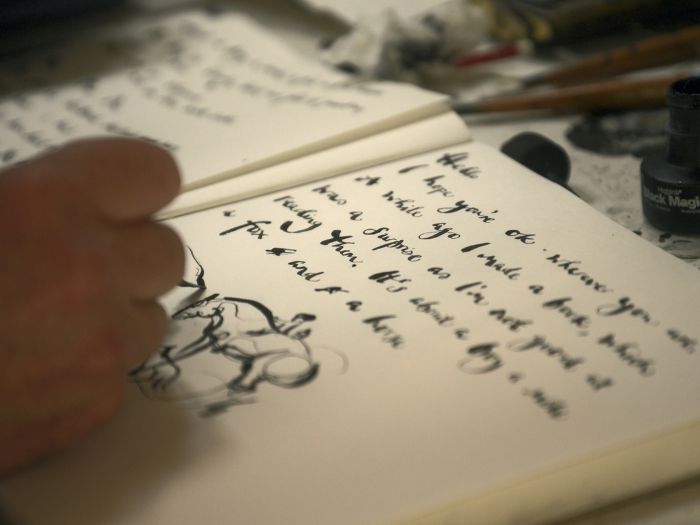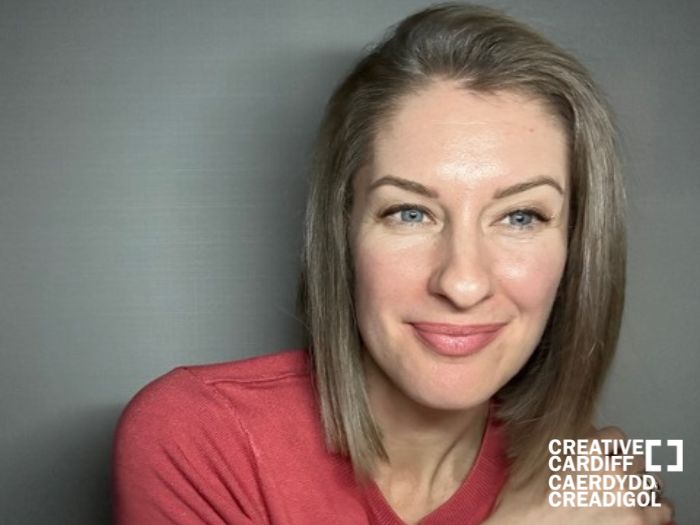Tell us about yourself and your creative background
My films convey powerful human stories through cinematic visuals, evocative detail and a close attention to film craft. In 2015, I became the first woman to win the Welsh BAFTA Breakthrough Award for my documentary Sexwork, Love & Mr Right, which I produced and directed.
As well as the Apple TV+ / BBC Two documentary single The Boy, The Mole, The Fox, The Horse and me, I've directed BAFTA Wales-nominated narrative short film The Arborist (available on BBC iPlayer), multi award-winning longform and shortform documentaries, short theatre works and films for charities including Maggie’s, Age UK and MENCAP. I’m currently shadowing NYC writer Andrea Chalupa (Mr Jones) through script development on her independent feature On The Record, a film about 1930s anti-fascist campaigner Dorothy Thompson. You can find more about my work on my website.
So, what’s your Creative First?
My creative first is directing a one-hour documentary for two major platforms. ‘Charlie Mackesy: The Boy, The Mole, The Fox, The Horse and me’ is the first longform commission I’ve been hired to direct – in this case, for Apple TV+ and BBC Two/iPlayer. It’s an intimate documentary portrait of British artist and illustrator Charlie Mackesy, his book and the making of his Oscar and BAFTA-winning animated short film. We produced two versions of the film: one for Apple TV+ and a different version for the BBC.
What was the biggest challenge you faced?
The biggest challenge I faced was a major change to the creative direction of the project part way through filming. The original plan was to shoot a 90” feature documentary for international release, with a straight 60” cut-down version for UK broadcast. The producers and I agreed that we would aim to tell the story of Charlie’s life, art and best-selling book primarily in his own words, using a non-traditional, structured observational approach without talking heads interviews or voiceover.
The final Charlie Mackesy documentaries capture elements of style and sensibility that are true to my original vision; others that aren’t. Although we couldn’t execute my original vision as intended, I made sure we were all clear on shoot-day objectives and the overall creative look and feel, and gentle sensibility of the films. I worked hard to think up lots of creative solutions plus plans B, C and D so we had options if access to the main subject was elusive. The qualities I needed to draw on included patience, tenacity, flexibility and responsiveness to last-minute issues and challenges, many of which were outside of my control but had a big impact on my work as the film’s director and lead creative voice.
Ultimately, the final films have a consistent tonality, look and feel that reflects my directing style. There’s a gentle, searching quality that I hope echoes the emotional sensibility you can find in all my films – a sense of how much I value our emotional lives and humanity – and an attention to detail that I hope creates an engaging story, so you feel you’re in safe hands. I hope the films offer UK, worldwide and festival audiences a warm, touching, peaceful and ‘lean-back’ kind of slow TV experience – an enjoyable space to watch, listen and reflect, allowing beautiful images, voice and sound to flow over them.
Can you share tips for others who would like to make documentaries?
-
Be clear on why you’re interested in a particular story or subject and what value you see in sharing it with others through the medium of documentary.
-
Enjoy the creative aspects of film craft and draw strength from the key creative partners you work with.
-
Be sure that you, your producers and the funders of film are all clear and agreed that you are making the same film. It can get very messy otherwise.

Why choose Cardiff for your creative first?
I’ve lived and worked in Cardiff since 2009, and it’s a great place to be involved in the creative industries. There are a number of welcoming co-working spaces where you can meet like-minded creative people (for example, I work from Rabble Studio in Cardiff Bay) and share stories from the front line of freelance life. Although the Mackesy doc was produced in London and post-production was at Round Table in Soho, I did all of development and all my prep/edit supervision from my home in Roath, where I can work peacefully and productively.


